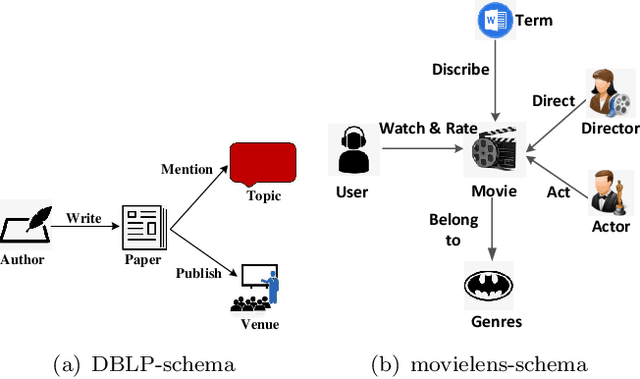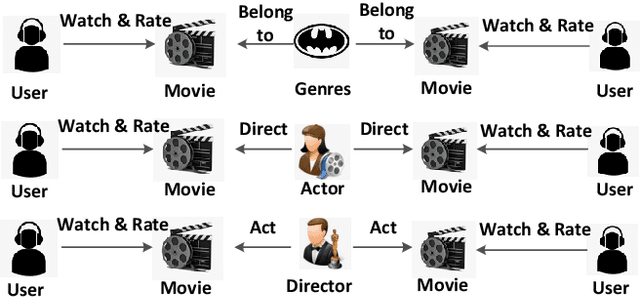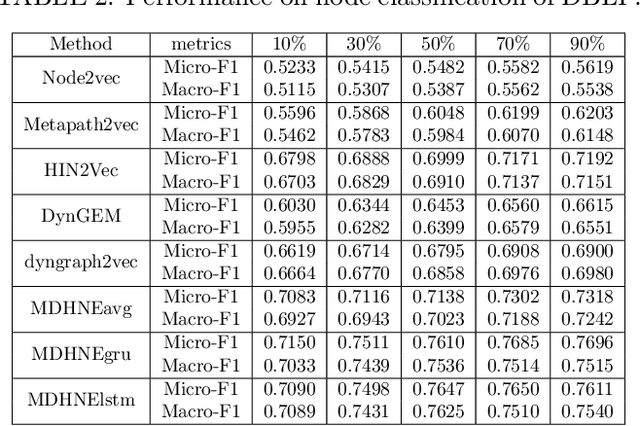Zhenghao Zhang
Identity-GRPO: Optimizing Multi-Human Identity-preserving Video Generation via Reinforcement Learning
Oct 16, 2025Abstract:While advanced methods like VACE and Phantom have advanced video generation for specific subjects in diverse scenarios, they struggle with multi-human identity preservation in dynamic interactions, where consistent identities across multiple characters are critical. To address this, we propose Identity-GRPO, a human feedback-driven optimization pipeline for refining multi-human identity-preserving video generation. First, we construct a video reward model trained on a large-scale preference dataset containing human-annotated and synthetic distortion data, with pairwise annotations focused on maintaining human consistency throughout the video. We then employ a GRPO variant tailored for multi-human consistency, which greatly enhances both VACE and Phantom. Through extensive ablation studies, we evaluate the impact of annotation quality and design choices on policy optimization. Experiments show that Identity-GRPO achieves up to 18.9% improvement in human consistency metrics over baseline methods, offering actionable insights for aligning reinforcement learning with personalized video generation.
Tora: Trajectory-oriented Diffusion Transformer for Video Generation
Jul 31, 2024Abstract:Recent advancements in Diffusion Transformer (DiT) have demonstrated remarkable proficiency in producing high-quality video content. Nonetheless, the potential of transformer-based diffusion models for effectively generating videos with controllable motion remains an area of limited exploration. This paper introduces Tora, the first trajectory-oriented DiT framework that integrates textual, visual, and trajectory conditions concurrently for video generation. Specifically, Tora consists of a Trajectory Extractor~(TE), a Spatial-Temporal DiT, and a Motion-guidance Fuser~(MGF). The TE encodes arbitrary trajectories into hierarchical spacetime motion patches with a 3D video compression network. The MGF integrates the motion patches into the DiT blocks to generate consistent videos following trajectories. Our design aligns seamlessly with DiT's scalability, allowing precise control of video content's dynamics with diverse durations, aspect ratios, and resolutions. Extensive experiments demonstrate Tora's excellence in achieving high motion fidelity, while also meticulously simulating the movement of the physical world. Page can be found at https://ali-videoai.github.io/tora_video.
BLOS-BEV: Navigation Map Enhanced Lane Segmentation Network, Beyond Line of Sight
Jul 11, 2024



Abstract:Bird's-eye-view (BEV) representation is crucial for the perception function in autonomous driving tasks. It is difficult to balance the accuracy, efficiency and range of BEV representation. The existing works are restricted to a limited perception range within 50 meters. Extending the BEV representation range can greatly benefit downstream tasks such as topology reasoning, scene understanding, and planning by offering more comprehensive information and reaction time. The Standard-Definition (SD) navigation maps can provide a lightweight representation of road structure topology, characterized by ease of acquisition and low maintenance costs. An intuitive idea is to combine the close-range visual information from onboard cameras with the beyond line-of-sight (BLOS) environmental priors from SD maps to realize expanded perceptual capabilities. In this paper, we propose BLOS-BEV, a novel BEV segmentation model that incorporates SD maps for accurate beyond line-of-sight perception, up to 200m. Our approach is applicable to common BEV architectures and can achieve excellent results by incorporating information derived from SD maps. We explore various feature fusion schemes to effectively integrate the visual BEV representations and semantic features from the SD map, aiming to leverage the complementary information from both sources optimally. Extensive experiments demonstrate that our approach achieves state-of-the-art performance in BEV segmentation on nuScenes and Argoverse benchmark. Through multi-modal inputs, BEV segmentation is significantly enhanced at close ranges below 50m, while also demonstrating superior performance in long-range scenarios, surpassing other methods by over 20% mIoU at distances ranging from 50-200m.
MapLocNet: Coarse-to-Fine Feature Registration for Visual Re-Localization in Navigation Maps
Jul 11, 2024



Abstract:Robust localization is the cornerstone of autonomous driving, especially in challenging urban environments where GPS signals suffer from multipath errors. Traditional localization approaches rely on high-definition (HD) maps, which consist of precisely annotated landmarks. However, building HD map is expensive and challenging to scale up. Given these limitations, leveraging navigation maps has emerged as a promising low-cost alternative for localization. Current approaches based on navigation maps can achieve highly accurate localization, but their complex matching strategies lead to unacceptable inference latency that fails to meet the real-time demands. To address these limitations, we propose a novel transformer-based neural re-localization method. Inspired by image registration, our approach performs a coarse-to-fine neural feature registration between navigation map and visual bird's-eye view features. Our method significantly outperforms the current state-of-the-art OrienterNet on both the nuScenes and Argoverse datasets, which is nearly 10%/20% localization accuracy and 30/16 FPS improvement on single-view and surround-view input settings, separately. We highlight that our research presents an HD-map-free localization method for autonomous driving, offering cost-effective, reliable, and scalable performance in challenging driving environments.
EffiVED:Efficient Video Editing via Text-instruction Diffusion Models
Mar 18, 2024Abstract:Large-scale text-to-video models have shown remarkable abilities, but their direct application in video editing remains challenging due to limited available datasets. Current video editing methods commonly require per-video fine-tuning of diffusion models or specific inversion optimization to ensure high-fidelity edits. In this paper, we introduce EffiVED, an efficient diffusion-based model that directly supports instruction-guided video editing. To achieve this, we present two efficient workflows to gather video editing pairs, utilizing augmentation and fundamental vision-language techniques. These workflows transform vast image editing datasets and open-world videos into a high-quality dataset for training EffiVED. Experimental results reveal that EffiVED not only generates high-quality editing videos but also executes rapidly. Finally, we demonstrate that our data collection method significantly improves editing performance and can potentially tackle the scarcity of video editing data. The datasets will be made publicly available upon publication.
Understanding Long Range-Frequency Hopping Spread Spectrum (LR-FHSS) with Real-World Packet Traces
Dec 21, 2023Abstract:Long Range-Frequency Hopping Spread Spectrum (LR-FHSS) is a new physical layer option that has been recently added to the LoRa family with the promise of achieving much higher network capacity than the previous versions of LoRa. In this paper, we present our evaluation of LR-FHSS based on real-world packet traces collected with an LR-FHSS device and a receiver we designed and implemented in software. We overcame challenges due to the lack of documentations of LR-FHSS and our study is the first of its kind that processes signals transmitted by an actual LR-FHSS device with practical issues such as frequency error. Our results show that LR-FHSS meets its expectations in communication range and network capacity. We also propose customized methods for LR-FHSS that improve its performance significantly, allowing our receiver to achieve higher network capacity than those reported earlier.
AnimateAnything: Fine-Grained Open Domain Image Animation with Motion Guidance
Dec 04, 2023Abstract:Image animation is a key task in computer vision which aims to generate dynamic visual content from static image. Recent image animation methods employ neural based rendering technique to generate realistic animations. Despite these advancements, achieving fine-grained and controllable image animation guided by text remains challenging, particularly for open-domain images captured in diverse real environments. In this paper, we introduce an open domain image animation method that leverages the motion prior of video diffusion model. Our approach introduces targeted motion area guidance and motion strength guidance, enabling precise control the movable area and its motion speed. This results in enhanced alignment between the animated visual elements and the prompting text, thereby facilitating a fine-grained and interactive animation generation process for intricate motion sequences. We validate the effectiveness of our method through rigorous experiments on an open-domain dataset, with the results showcasing its superior performance. Project page can be found at https://animationai.github.io/AnimateAnything.
UVOSAM: A Mask-free Paradigm for Unsupervised Video Object Segmentation via Segment Anything Model
May 22, 2023



Abstract:Unsupervised video object segmentation has made significant progress in recent years, but the manual annotation of video mask datasets is expensive and limits the diversity of available datasets. The Segment Anything Model (SAM) has introduced a new prompt-driven paradigm for image segmentation, unlocking a range of previously unexplored capabilities. In this paper, we propose a novel paradigm called UVOSAM, which leverages SAM for unsupervised video object segmentation without requiring video mask labels. To address SAM's limitations in instance discovery and identity association, we introduce a video salient object tracking network that automatically generates trajectories for prominent foreground objects. These trajectories then serve as prompts for SAM to produce video masks on a frame-by-frame basis. Our experimental results demonstrate that UVOSAM significantly outperforms current mask-supervised methods. These findings suggest that UVOSAM has the potential to improve unsupervised video object segmentation and reduce the cost of manual annotation.
Towards Robust Video Instance Segmentation with Temporal-Aware Transformer
Jan 20, 2023Abstract:Most existing transformer based video instance segmentation methods extract per frame features independently, hence it is challenging to solve the appearance deformation problem. In this paper, we observe the temporal information is important as well and we propose TAFormer to aggregate spatio-temporal features both in transformer encoder and decoder. Specifically, in transformer encoder, we propose a novel spatio-temporal joint multi-scale deformable attention module which dynamically integrates the spatial and temporal information to obtain enriched spatio-temporal features. In transformer decoder, we introduce a temporal self-attention module to enhance the frame level box queries with the temporal relation. Moreover, TAFormer adopts an instance level contrastive loss to increase the discriminability of instance query embeddings. Therefore the tracking error caused by visually similar instances can be decreased. Experimental results show that TAFormer effectively leverages the spatial and temporal information to obtain context-aware feature representation and outperforms state-of-the-art methods.
Multi-View Dynamic Heterogeneous Information Network Embedding
Nov 12, 2020



Abstract:Most existing Heterogeneous Information Network (HIN) embedding methods focus on static environments while neglecting the evolving characteristic of realworld networks. Although several dynamic embedding methods have been proposed, they are merely designed for homogeneous networks and cannot be directly applied in heterogeneous environment. To tackle above challenges, we propose a novel framework for incorporating temporal information into HIN embedding, denoted as Multi-View Dynamic HIN Embedding (MDHNE), which can efficiently preserve evolution patterns of implicit relationships from different views in updating node representations over time. We first transform HIN to a series of homogeneous networks corresponding to different views. Then our proposed MDHNE applies Recurrent Neural Network (RNN) to incorporate evolving pattern of complex network structure and semantic relationships between nodes into latent embedding spaces, and thus the node representations from multiple views can be learned and updated when HIN evolves over time. Moreover, we come up with an attention based fusion mechanism, which can automatically infer weights of latent representations corresponding to different views by minimizing the objective function specific for different mining tasks. Extensive experiments clearly demonstrate that our MDHNE model outperforms state-of-the-art baselines on three real-world dynamic datasets for different network mining tasks.
 Add to Chrome
Add to Chrome Add to Firefox
Add to Firefox Add to Edge
Add to Edge